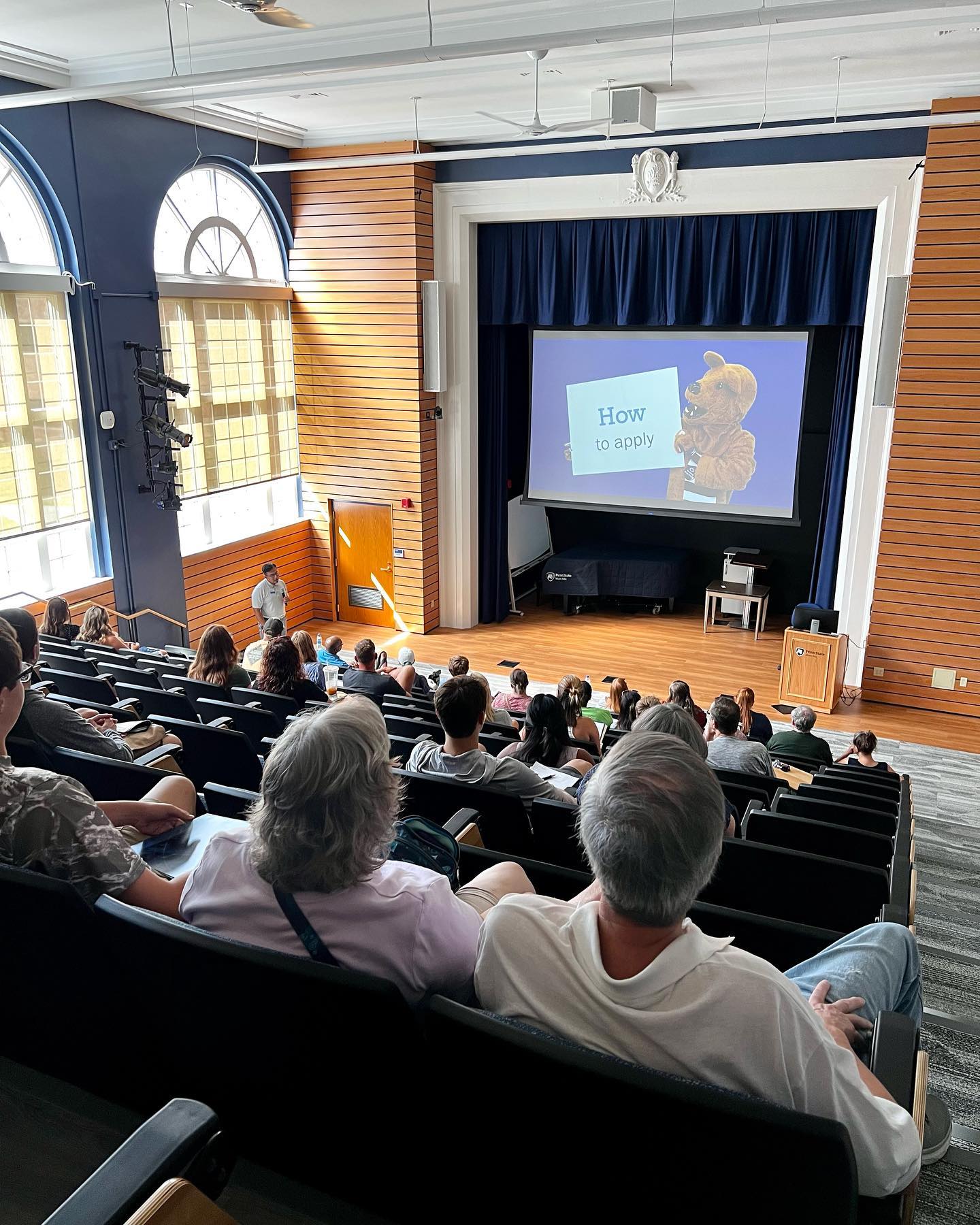

Integrating dynamic audio, visual and lighting (AVL) systems into your building is a powerful way to take your facility to new heights. These revolutionary enhancements feature state-of-the-art technology and virtually endless capabilities. However, their success in any capacity relies heavily on proper installation, strategic implementation and a team of knowledgeable operators.
At Illuminated Integration, we understand that all AVL projects require the best practices. Cutting corners or using DIY methods in an attempt to complete an AVL building design as quickly and cheaply as possible can endangering the safety of those in your facility and achieving low-quality results. No single person can complete an AVL setup, but a talented and properly prepared project team can create an unrivaled auditory and visual experience. Let’s discuss the AV best practices regarding everything from the initial design to the integration process.
Those searching for an AV installation handbook need to remember that there are two different ways to design and build AVL systems — cookie-cutter approaches and customized approaches. One-size-fits-all designs likely lack capabilities where you need them most or possess an overabundance of resources that your specific setting doesn’t require. The best practices involve planning and preparation before you consult with a project team. We believe all facility managers interested in starting an AV project focus on the following:
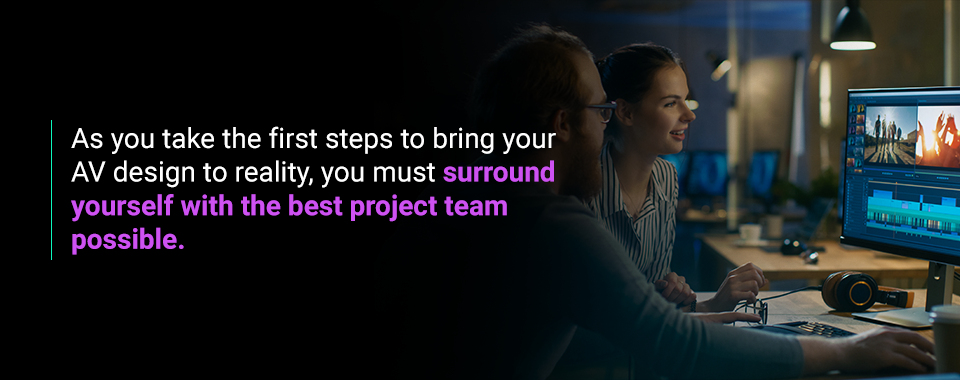
Trust us — there is no way a single person can successfully complete an AVL building design alone. Although Illuminated Integration is a proud team of industry experts, our dynamic technicians seek out other qualified opinions regarding specific elements of each individual project. As you take the first steps to bring your AV design to reality, you must surround yourself with the best project team possible.
Who is involved in the decision-making process? We recommend bringing together a team of specialists including:
Now that you’ve gathered a team of professionals representing your facility and your project, it’s time to come together for pre-production discussions. Each member of your team will either lend their expert opinion on how to proceed with the integration process or highlight all of the functional and legal requirements necessary when completing any building design. Be receptive to all points of view and open to considering any potential modifications that might achieve your vision through creative ways.
Your team must agree to a budget and scope of the project, which can be achieved by creating a request for a proposal that provides a detailed summary of all structural and technical capabilities of the space, the approximate timeline for project completion and the support desired from the contractors after the integration process. Once in agreement, the team should send these requests for proposals to two to four reputable AVL companies. Create a rubric so you can objectively rank each company according to your specific needs.
If this is your first time entering into an AVL build, many elements of this process may be new to you. Before these discussions begin, we believe that it is immensely helpful to gain insight into what an AVL proposal may look like. There are helpful sample contract forms and proposals available from many resources, including online and directly from the project teams you’re considering. Look over these forms and compare them to other samples if possible.
Whether you have an elementary or thorough knowledge of the AVL design and integration process, your particular situation will come with its own unique requirements. For example, you’ll need to create a timeline and decide how you’ll choose your AVL project team. These two considerations will help you secure the right project team that can accomplish your vision within your timeframe and budget.
When you get ready to approach prospective project teams, you must first decide if you’re going to open it up for competitive bidding. By submitting requests for proposals (RFPs), you allow multiple companies to create a proposal that attempts to fulfill your requirements for the “best” price. However, we encourage many clients to stray from bidding wars and instead focus on finding the right fit. Affordability is important, but it’s also key that you work with a company that isn’t simply vying to beat their competition by any means.
Your timeline for this project must be reasonable, acknowledging that a customized design, installation and implementation cannot be completed overnight. Before you ask a project team for an estimate on completion time, your team of advisors should identify any scheduling conflicts or necessities. For instance, will you need the AVL system in place to meet a specific performance deadline? Will holidays delay access to the building? Could fiscal quarters prevent you from allocating your budget to this project when necessary? Detail your timeline out as well as possible.
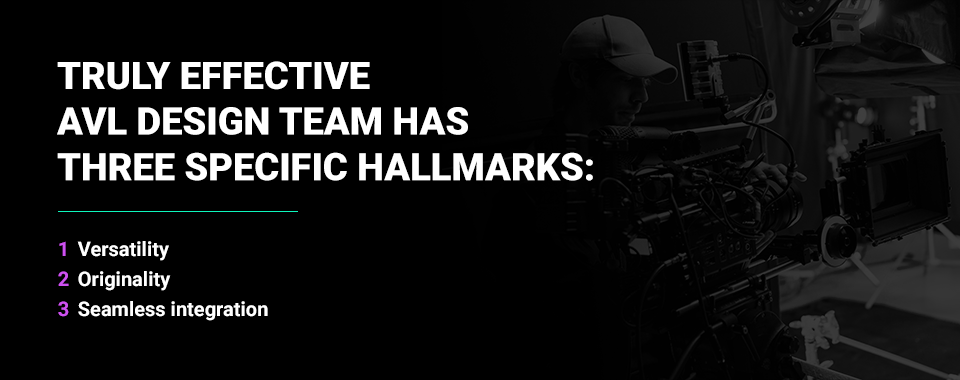
Which vendor will be executing this project? Selecting a vendor involves much more than simply comparing pricing guides and service capabilities. Your AV design is an important investment which is why you need to choose an AVL team that is ready to protect and preserve that investment every step of the way. We believe that a truly effective AVL design team has three specific hallmarks:
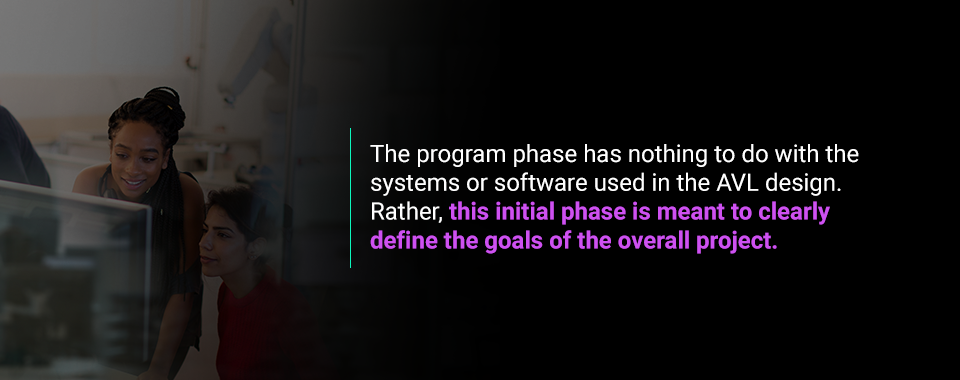
The program phase has nothing to do with the systems or software used in the AVL design. Rather, this initial phase is meant to clearly define the goals of the overall project. This is a large-scale outline that will cover an overview of the project from concept to cost. Your team will create a program report that includes concept drawings, lists the standards or requirements they must meet, details how they will meet these needs and summarizes the proposed AV system’s capabilities.
During this phase, it’s important to ensure that everyone is on the same page with the big-picture outlook. While many members of your team will surely have questions and comments related to the finer elements of the project, it’s best to keep everyone focused on the task at hand. By approaching this project in broad strokes, you’ll create a firm foundation that enables you to integrate each detail into the plan without overlooking any major keystones of the project.
One of the most important elements of the design phase is structure. While a wealth of ideas and a creative flow can be beneficial, you must remember that these exciting conversations can derail your vision and delay the completion of the design. These design meetings require structure. Ideally, your team of advisors and the AVL project team will each come to the table with ideas based upon initial conversations. Our tips for the best practices before, during and after these meetings include:
The construction phase is critical to the success of your system. Like the design phase, the construction phase will require regular meetings before, during and after the project is physically worked on. Your facility managers and architects will need to coordinate with the AVL project team frequently. There should be a set timeframe for routine updates, such as once a week or on an agreed-upon schedule. You also need to address logistics in the pre-construction planning, such as when the space will be closed and reopened during construction.
It’s also important to note that regardless of any single person’s position, there are a few key individuals who will lead the majority of the project. Architects and general contractors will have a substantial percentage of control throughout this process, and they should communicate frequently with the building owner and facility manager. It’s important that members of your team understand their role in this phase and discuss their concerns with the building owner, facility manager or project manager before approaching contractors or architects.
As the project nears its final stages, you should now have a comfortable understanding of how this AVL design and its construction will produce your desired results. This first involves complete system commissioning to ensure that every system and component in place meets the building and system codes of your facility. All pieces of hardware and software should be tested through operation and assessed for any potential health or safety issues. After all the requirements and safety regulations are met, you can then proceed with training.
One of the vital pieces of information all parties working with or managing the AVL system understand how to use the hardware and software. You should receive documentation such as a guide or handbook which explains how these systems function. Your AVL project team should provide thorough hands-on training for all of your staff. The key is to continue engaging with the system and your staff after the implementation process so you ensure that all parties are confident and comfortable working with all equipment.
It’s highly likely that you will not be physically present to manage your AV setup during key operating times. After the integration process is complete, it’s critical that you and all personnel operating the AVL system know how to troubleshoot issues, resolve minor problems and contact the project team for additional support. Ideally, the AVL project team that you hire should provide you with hardware and software support for the lifetime of your AVL build. If an AVL contractor does not provide long-term assistance, you jeopardize your investment.
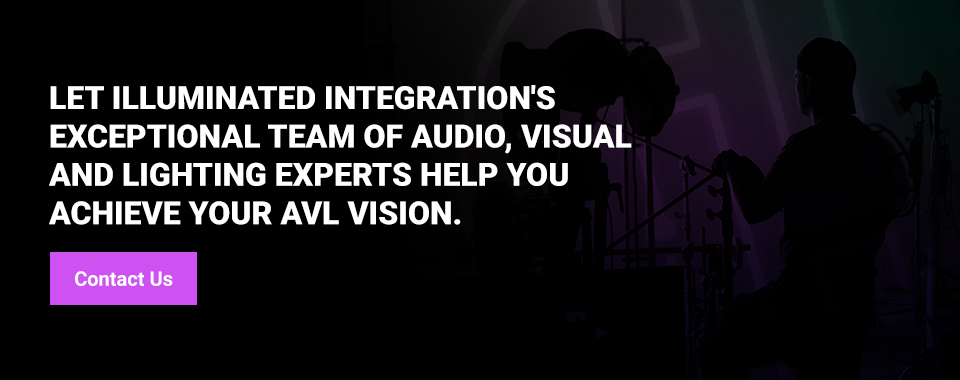
Any AVL project is quite an undertaking, especially if you’re committed to using the best practices from initial building design through the integration process. While no single person can accomplish this feat alone, a dynamic project team and a trusted board of knowledgeable advisors can turn your AV vision into a stunning reality.
Let Illuminated Integration’s exceptional team of audio, visual and lighting experts help you achieve your AVL vision. With decades of combined industry experience, we’ve designed, installed and implemented remarkable AVL builds into schools, theaters, offices, event venues, places of worship and more. Give us a call today to learn more about the best practices for your AVL project.